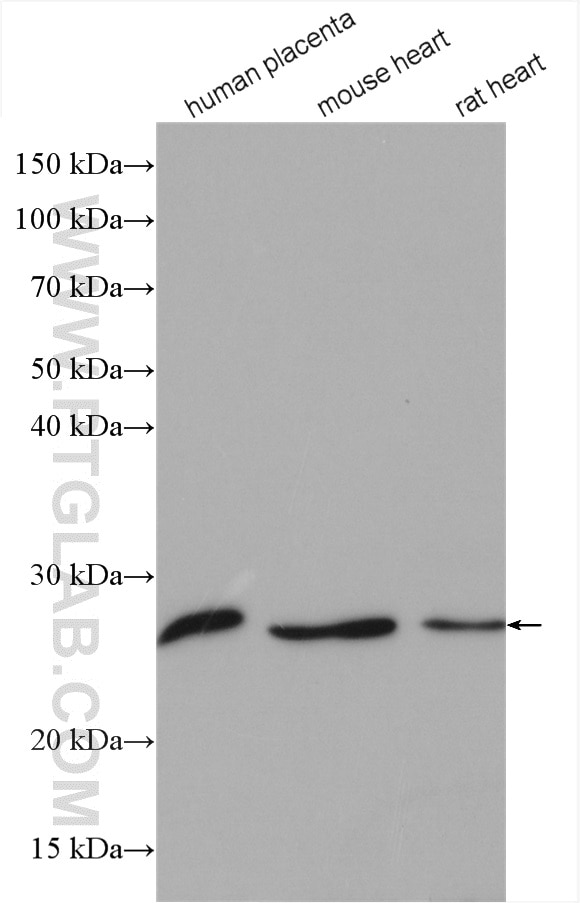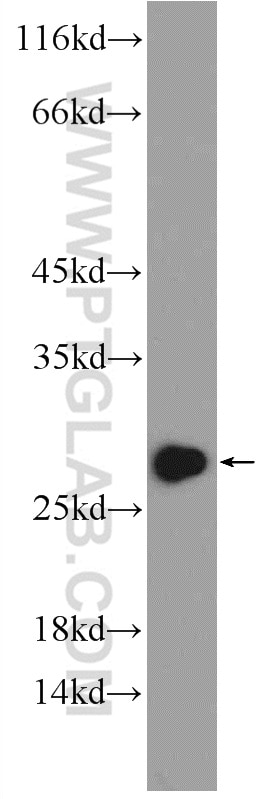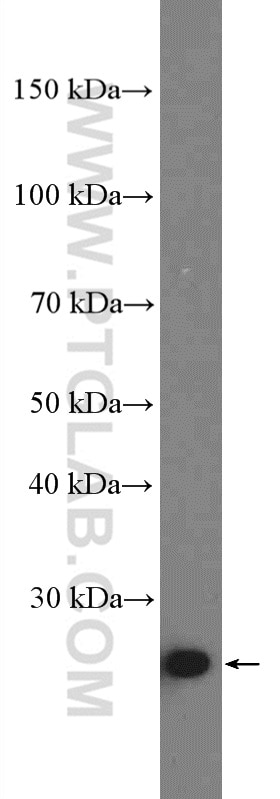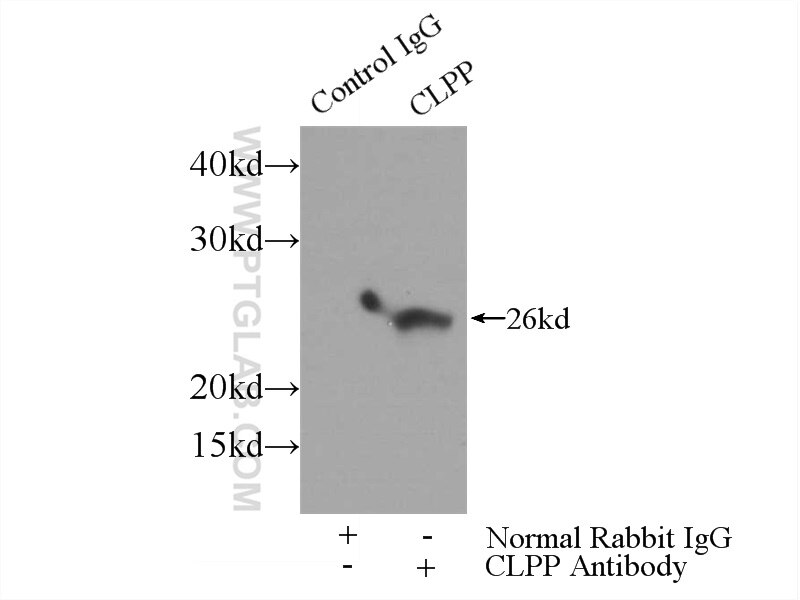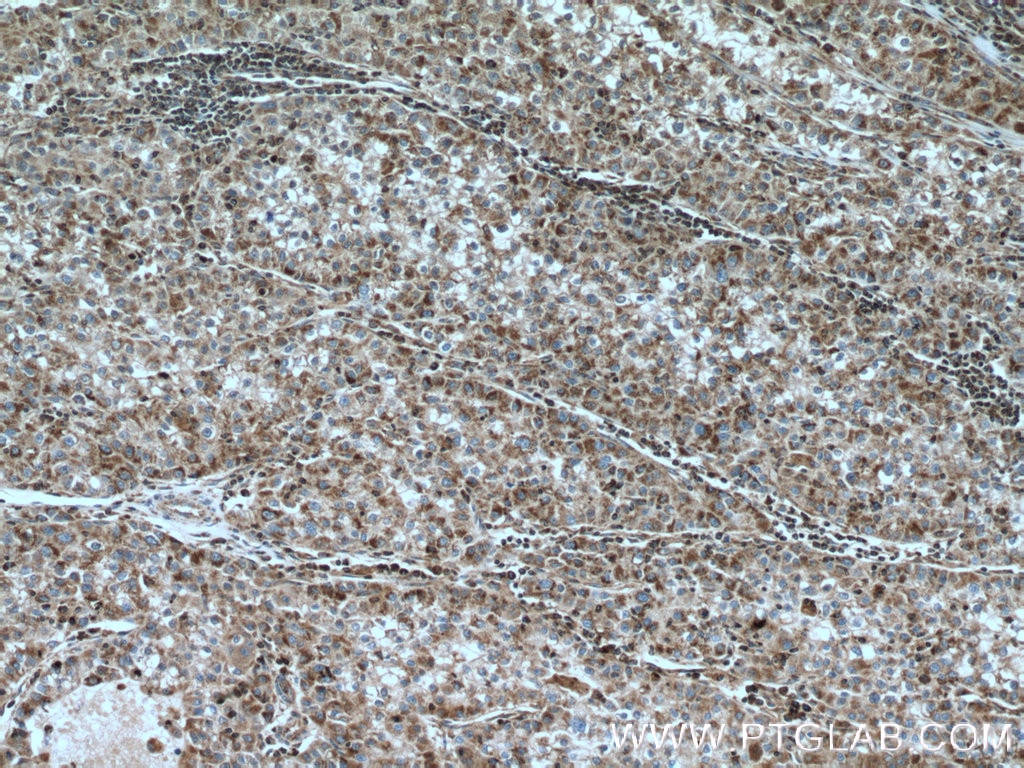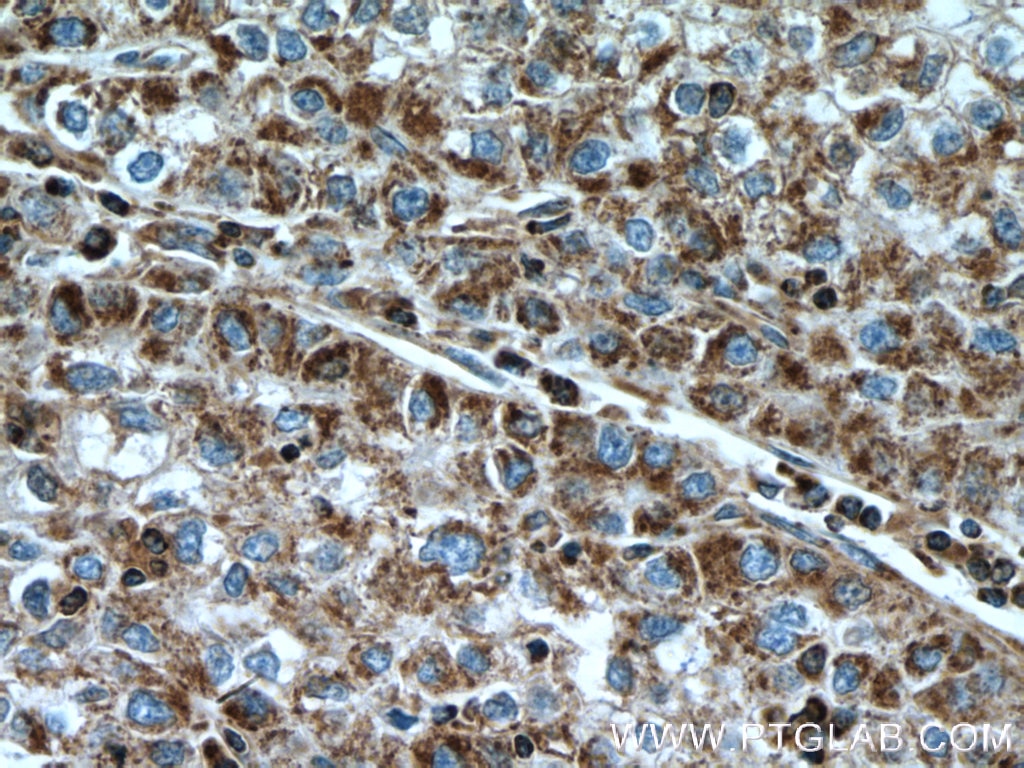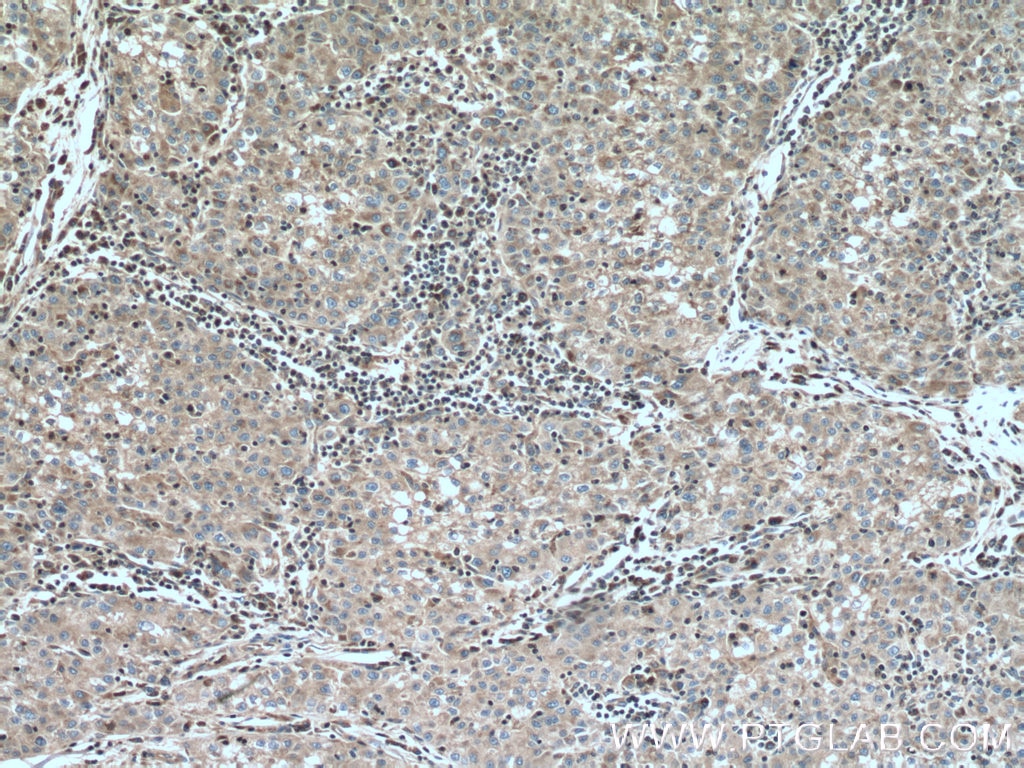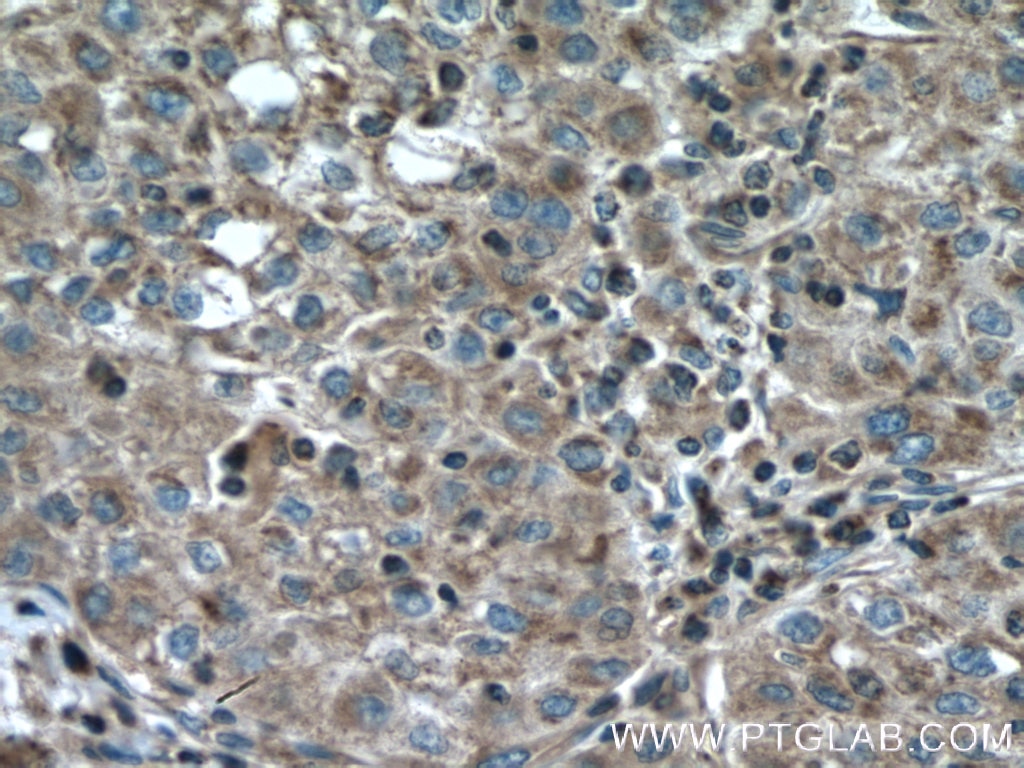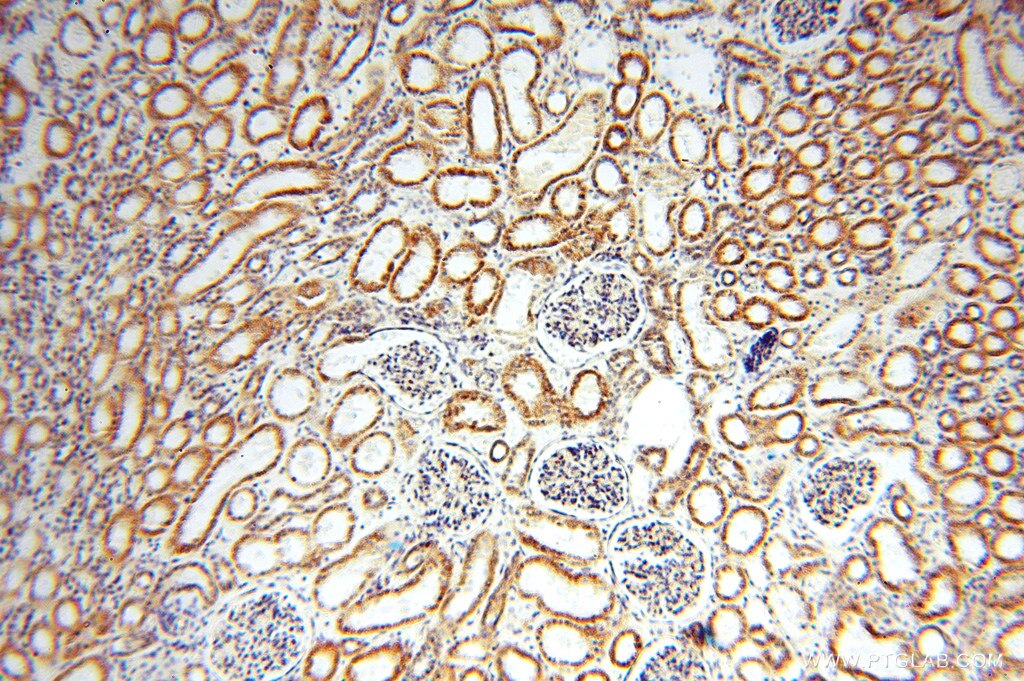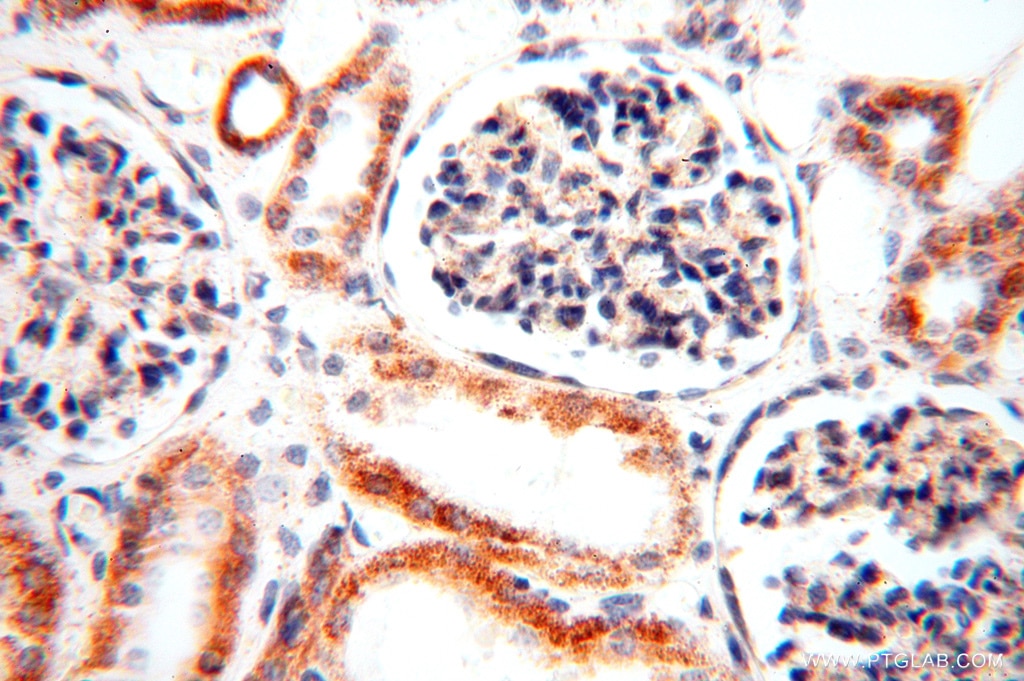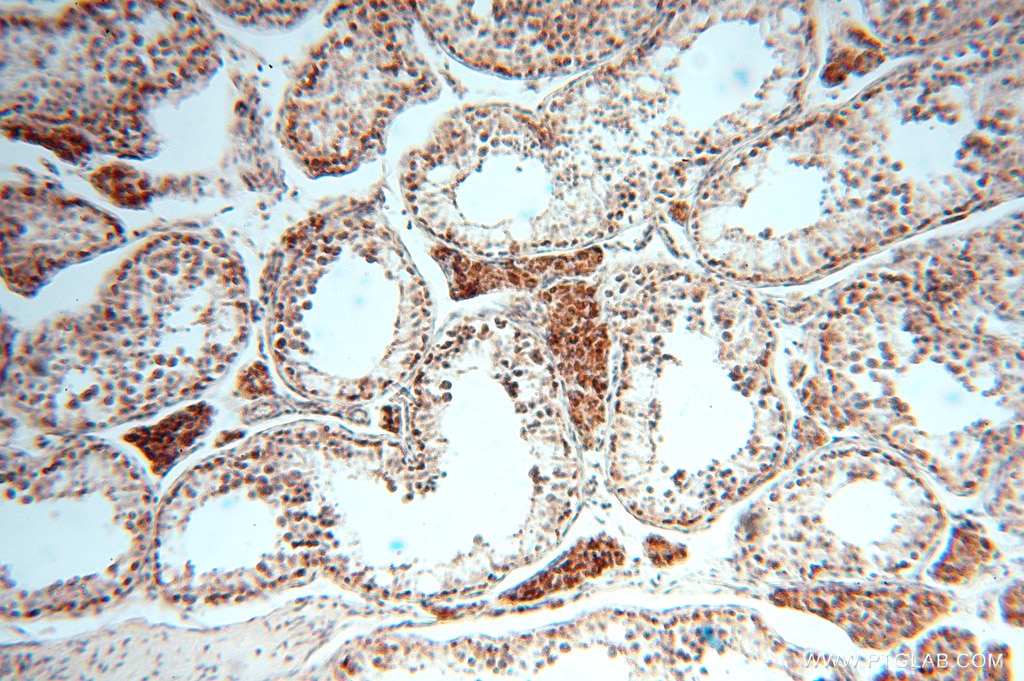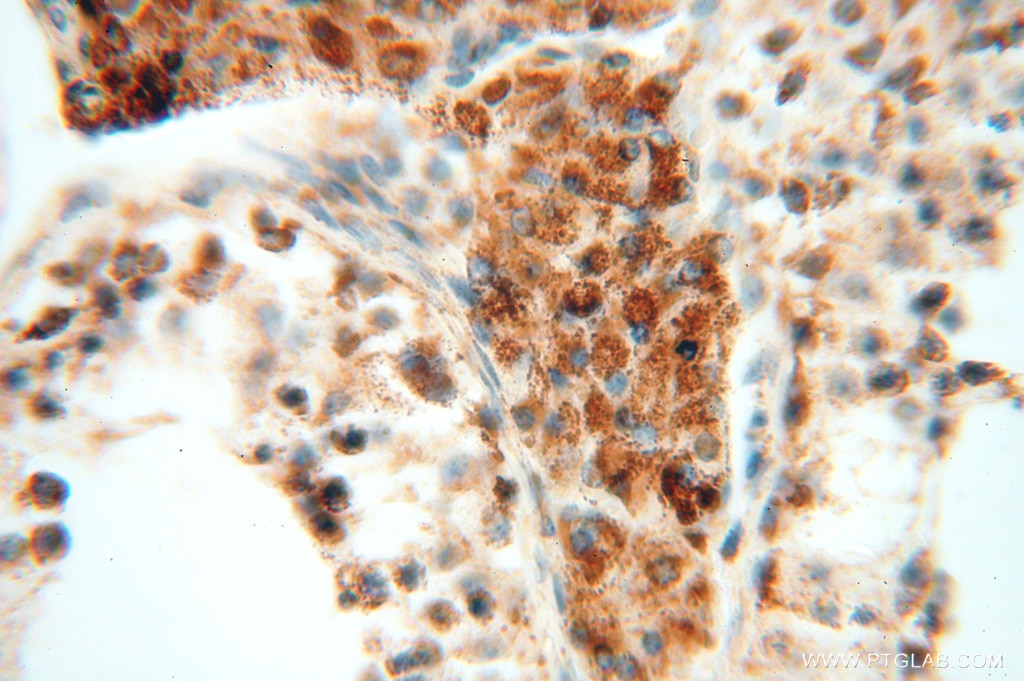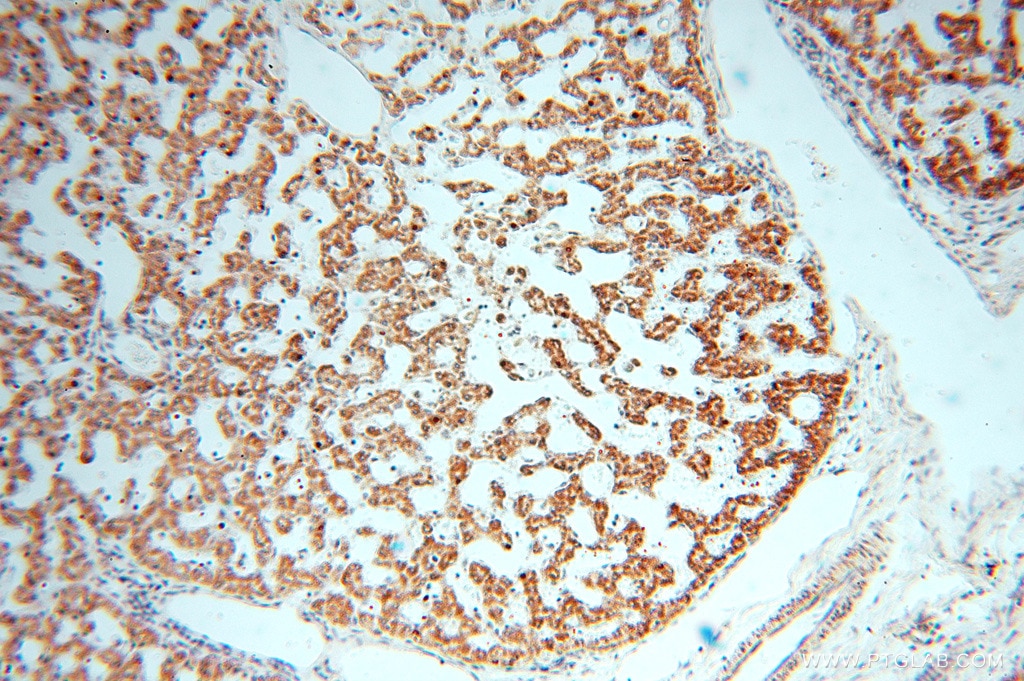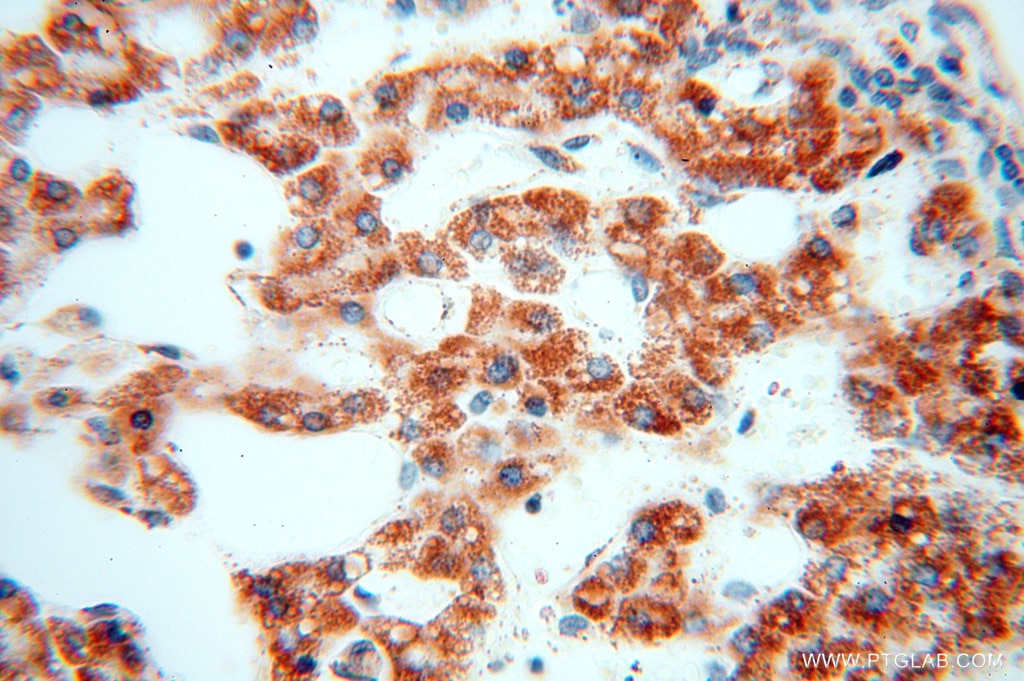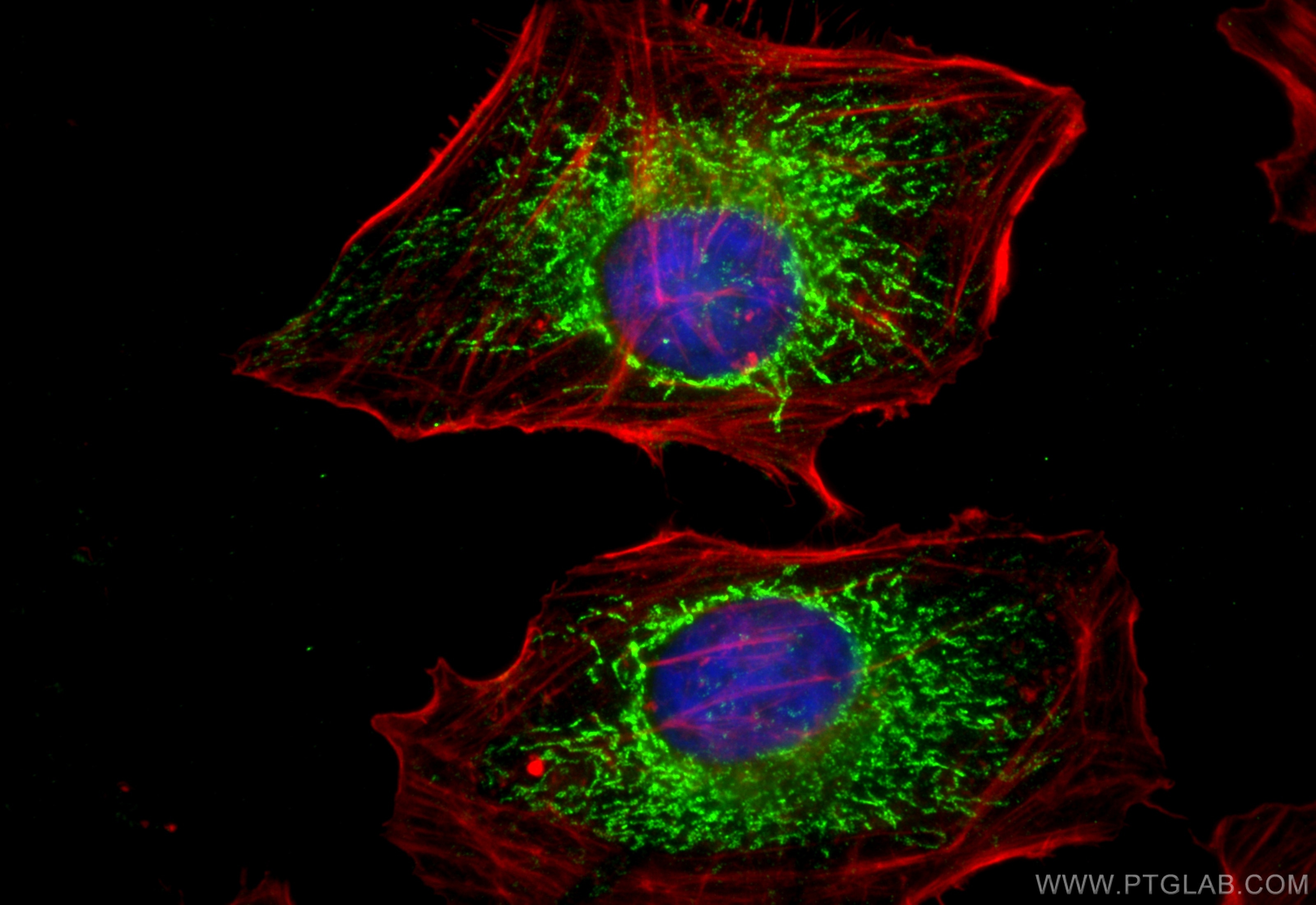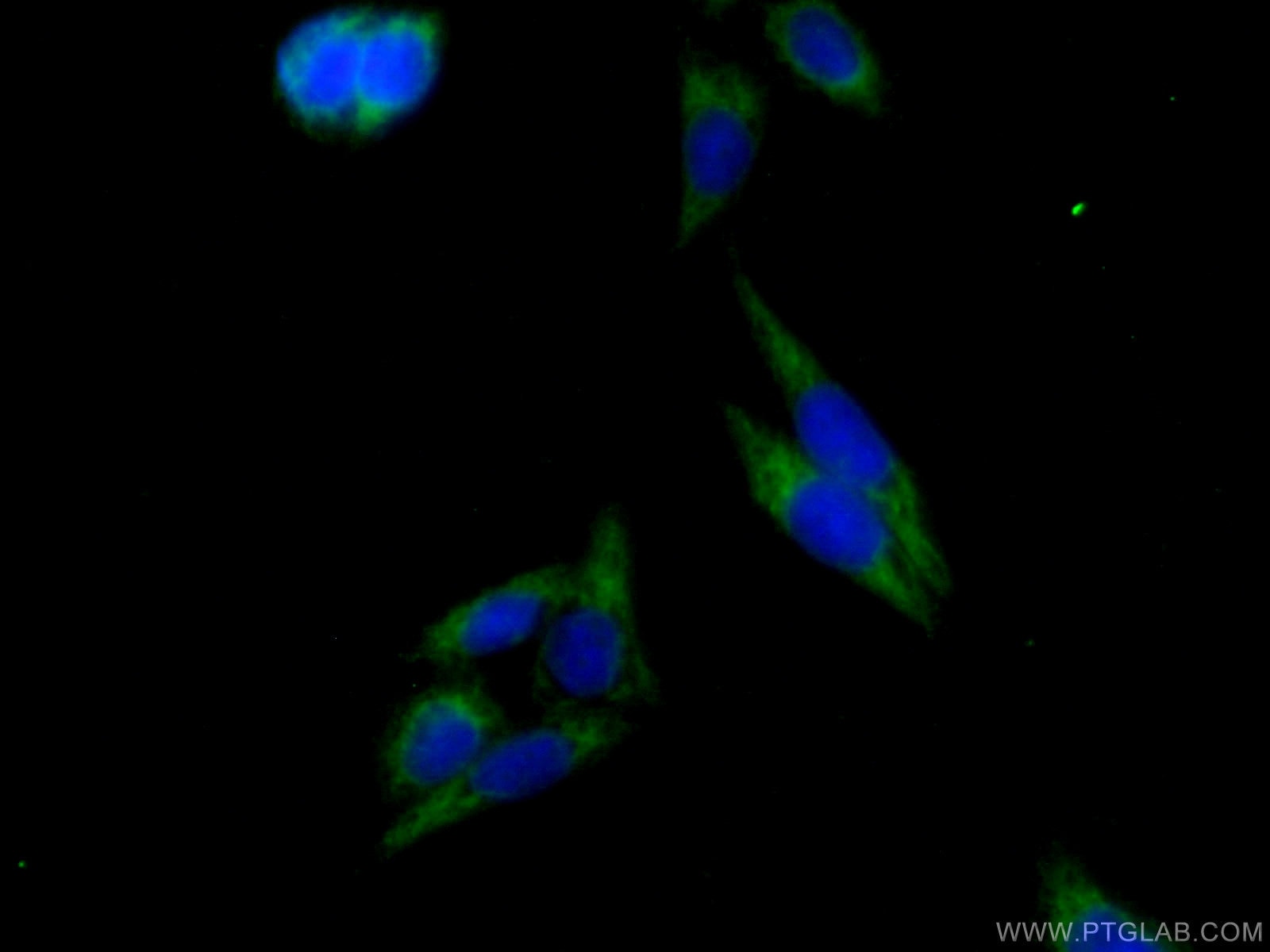- Phare
- Validé par KD/KO
Anticorps Polyclonal de lapin anti-CLPP
CLPP Polyclonal Antibody for WB, IHC, IF/ICC, IP, ELISA
Hôte / Isotype
Lapin / IgG
Réactivité testée
Humain, rat, souris et plus (3)
Applications
WB, IHC, IF/ICC, IP, CoIP, ELISA
Conjugaison
Non conjugué
N° de cat : 15698-1-AP
Synonymes
Galerie de données de validation
Applications testées
| Résultats positifs en WB | tissu placentaire humain, cellules K-562, tissu cardiaque de rat, tissu cardiaque de souris |
| Résultats positifs en IP | tissu de muscle squelettique de souris |
| Résultats positifs en IHC | tissu de cancer du foie humain, tissu hépatique humain, tissu rénal humain, tissu testiculaire humain il est suggéré de démasquer l'antigène avec un tampon de TE buffer pH 9.0; (*) À défaut, 'le démasquage de l'antigène peut être 'effectué avec un tampon citrate pH 6,0. |
| Résultats positifs en IF/ICC | cellules HeLa, |
Dilution recommandée
| Application | Dilution |
|---|---|
| Western Blot (WB) | WB : 1:1000-1:8000 |
| Immunoprécipitation (IP) | IP : 0.5-4.0 ug for 1.0-3.0 mg of total protein lysate |
| Immunohistochimie (IHC) | IHC : 1:50-1:500 |
| Immunofluorescence (IF)/ICC | IF/ICC : 1:50-1:500 |
| It is recommended that this reagent should be titrated in each testing system to obtain optimal results. | |
| Sample-dependent, check data in validation data gallery | |
Applications publiées
| KD/KO | See 4 publications below |
| WB | See 50 publications below |
| IHC | See 3 publications below |
| IF | See 3 publications below |
| CoIP | See 1 publications below |
Informations sur le produit
15698-1-AP cible CLPP dans les applications de WB, IHC, IF/ICC, IP, CoIP, ELISA et montre une réactivité avec des échantillons Humain, rat, souris
| Réactivité | Humain, rat, souris |
| Réactivité citée | rat, Chèvre, Humain, poisson-zèbre, poulet, souris |
| Hôte / Isotype | Lapin / IgG |
| Clonalité | Polyclonal |
| Type | Anticorps |
| Immunogène | CLPP Protéine recombinante Ag8325 |
| Nom complet | ClpP caseinolytic peptidase, ATP-dependent, proteolytic subunit homolog (E. coli) |
| Masse moléculaire calculée | 30 kDa |
| Poids moléculaire observé | 26 kDa, 30 kDa |
| Numéro d’acquisition GenBank | BC002956 |
| Symbole du gène | CLPP |
| Identification du gène (NCBI) | 8192 |
| Conjugaison | Non conjugué |
| Forme | Liquide |
| Méthode de purification | Purification par affinité contre l'antigène |
| Tampon de stockage | PBS with 0.02% sodium azide and 50% glycerol |
| Conditions de stockage | Stocker à -20°C. Stable pendant un an après l'expédition. L'aliquotage n'est pas nécessaire pour le stockage à -20oC Les 20ul contiennent 0,1% de BSA. |
Informations générales
CLPP is the putative ATP-dependent Clp protease proteolytic subunit and also named as endopeptidase Clp. It belongs to the peptidase S14 family. Clp cleaves peptides in various proteins in a process that requires ATP hydrolysis. It may be responsible for a fairly general and central housekeeping function rather than for the degradation of specific substrates. This protein has a transit peptide of 56 amino acid.
Protocole
| Product Specific Protocols | |
|---|---|
| WB protocol for CLPP antibody 15698-1-AP | Download protocol |
| IHC protocol for CLPP antibody 15698-1-AP | Download protocol |
| IF protocol for CLPP antibody 15698-1-AP | Download protocol |
| IP protocol for CLPP antibody 15698-1-AP | Download protocol |
| Standard Protocols | |
|---|---|
| Click here to view our Standard Protocols |
Publications
| Species | Application | Title |
|---|---|---|
Cell Metab Fibroblast Growth Factor 21 Drives Dynamics of Local and Systemic Stress Responses in Mitochondrial Myopathy with mtDNA Deletions. | ||
Cell Metab mTORC1 Regulates Mitochondrial Integrated Stress Response and Mitochondrial Myopathy Progression. | ||
Mol Cell The mitochondrial DNAJC co-chaperone TCAIM reduces α-ketoglutarate dehydrogenase protein levels to regulate metabolism
| ||
Cell Metab Proteolytic cleavage of opa1 stimulates mitochondrial inner membrane fusion and couples fusion to oxidative phosphorylation. | ||
Sci Adv Mitochondrial proteostasis stress in muscle drives a long-range protective response to alleviate dietary obesity independently of ATF4. | ||
Nat Commun Disuse-associated loss of the protease LONP1 in muscle impairs mitochondrial function and causes reduced skeletal muscle mass and strength. |
Avis
The reviews below have been submitted by verified Proteintech customers who received an incentive for providing their feedback.
FH Anh (Verified Customer) (07-15-2021) | very good, very clear bands
|
FH Mariusz (Verified Customer) (02-06-2019) | Excellent antibody bot for Western blot (1:2000) dilution and immunofluorescence (1:200). Single band on Western, and clean signal reflecting mitochondrial matrix in IF.
|
